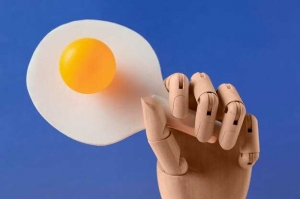The testicles are contained in a skin sac called the scrotum, located under the penis. They produce sperm and testosterone, the male sex hormone. The blood circulating in the testicles passes through the spermatic cord, which starts from the abdominal cavity and reaches the scrotum. The spermatic cord also contains the vas deferens, which carries sperm from the testes to the urethra.
Testicular torsion is a condition that occurs when the testicle is free to rotate around the spermatic cord and suddenly no longer receives the blood flow intended for it. The pathology occurs in patients of any age.
Why does testicular torsion occur?
In most men, the testicle cannot twist because the surrounding tissue is firmly attached to the scrotum, but in some cases there are congenital anomalies in which the testicles are able to rotate. In other cases, the spermatic cord may be too long, resulting in excessive mobility. If there is an individual predisposition, testicular torsion is provoked by particularly intense physical activity, trauma, random sudden movements during sleep, and very low temperatures, which force the scrotum to move backward, bringing it closer to the body.
Who is at greater risk?
Risk factors: age; family history; difference in testicular size. Testicular torsion most often occurs before the age of 18 years (65% of cases). If there have been cases of testicular pain in the past that disappeared without any therapy ( periodic torsion ), the problem may recur. The more frequent the episodes of pain, the greater the risk of testicular injury. Family history of testicular torsion : the disease may be hereditary due to the presence of congenital malformations. One testicle may be significantly larger than the other due to physiological or pathological reasons, such as a tumor.
What are the signs of testicular torsion?
The left testicle is most often affected and in most cases only one testicle is affected (only 2% of cases affect both). Testicular torsion is a medical emergency. All blood flowing to the testicle passes through the spermatic cord, so when torsion occurs, blood circulation completely stops. If appropriate measures are not taken within 6 hours, the testicle begins to atrophy. Without blood, the testicle may die (testicular infarction) . The scrotum suddenly begins to hurt, becomes red and swollen, and the pain becomes unbearable. Less commonly, pain associated with testicular torsion occurs gradually over several hours or days. Nausea and/or vomiting and sometimes a slight increase in body temperature (especially in later stages, with the appearance of testicular necrosis) are also often present. Some patients complain of discomfort and/or pain even during urination. Any problems with urination are not a symptom of torsion .
When to see a doctor?
Contact your urologist immediately if your testicle starts to hurt, especially suddenly. Only timely medical intervention can prevent testicular loss. You should also contact Bogolyuby MC if your testicle suddenly starts to hurt, and then the pain goes away without any treatment. In this case, intermittent torsion may occur , that is, the testicle first twists and then returns to its normal state on its own. In many cases, surgery is necessary to ensure that this problem does not return.
What are the consequences?
The prognosis largely depends on the speed of medical intervention, in particular, the scientific literature reports the risks of testicular loss: less than 6 hours - 90-100% of the testicles are preserved, 12-24 hours - 20-50% of the testicles are preserved, more than 24 hours - almost certain loss testicles. Possible consequences of testicular torsion include : testicular infarction; infertility; testicular loss. If the testicle is severely damaged, it must be removed surgically.
















